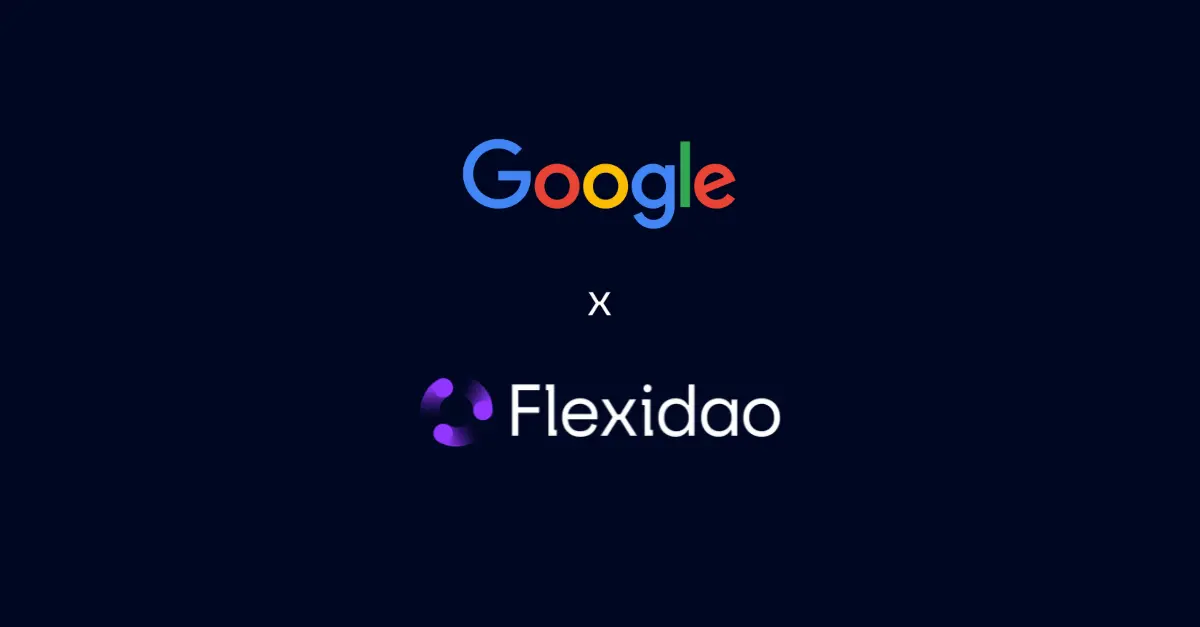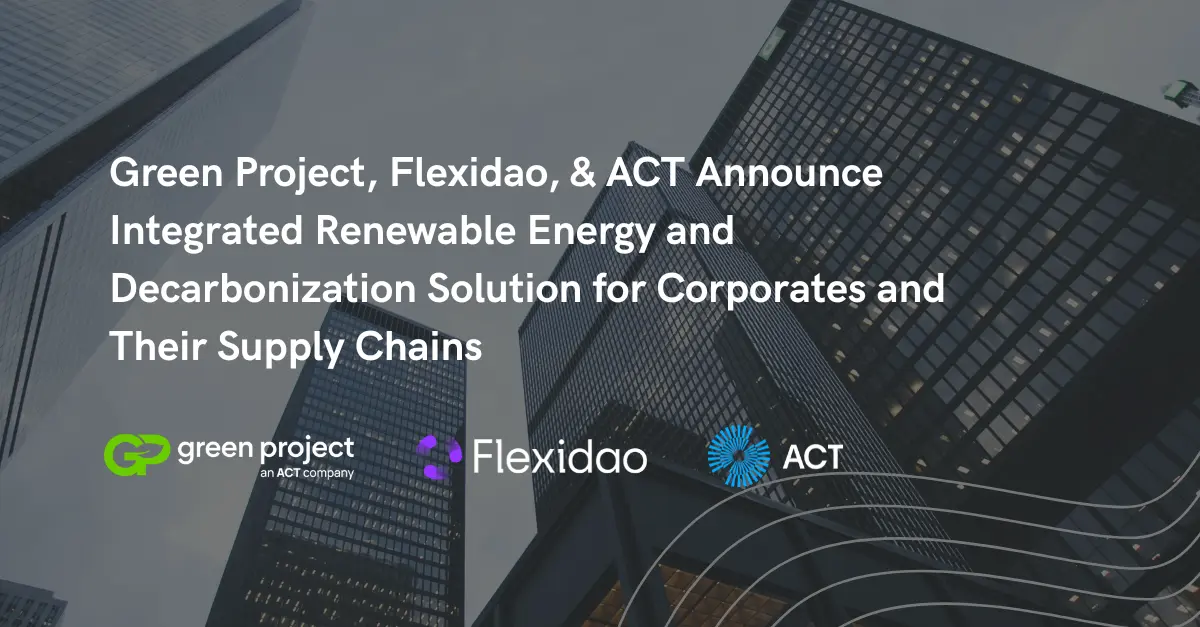Purchasing Renewable Energy: Energy Products Compared
Purchasing Renewable Energy: Energy Products Compared
Compare renewable energy products with Flexidao. Make smarter energy procurement decisions with our comprehensive analysis.
How to Purchase Renewable Energy : A Comparison of Available Energy Products
Renewable energy purchasing is a complex task large businesses need to undertake. There are many different options available to companies who want to use renewable energy, each with their own costs and benefits when it comes to managing your energy portfolio and accurate sustainability accounting. .
Regardless of what renewable energy purchases you decide to make, Flexidao can help you manage your electricity contracts and certificates.
How to Purchase Renewable Energy
- Self-owned on-site
In many cases, a company will have the option to install its renewable energy installation on-site and use the power generated ‘behind the meter’. This could be through a rooftop solar array or a wind turbine on the grounds of a site. With these installations, electrons flow directly from the renewable generator to the power loads on-site.
The main benefit of this option is that it can lead to high-energy cost savings. Companies can typically avoid the costs of electricity transmission/distribution and other levies on energy bills. The main drawback of this option is that the company will have to fund the capital and operational costs themselves. With this approach, the purchaser will also generally assume more of the construction and operational-based risk. The size of the installation will also be restricted by the available ground or roof space on-site.
- Price (All-in Cost) ~€50-€150/MWh (Highly bespoke to technology, size, location etc.)
- Accessibility – Medium (Restricted to available space on-site)
- CO2 Impact – Very High
- On-site Power Purchase Agreement (PPA)
With this option, a renewable energy plant is installed on-site by a third party. The third-party developer will usually build, own, operate, and maintain the installation and so therefore assumes more of the project risks involved. Due to this risk transfer, this option will typically offer lower savings than if the company were to build the plant itself (as in Option 1).
To monetize the project, the third party will set up a PPA with the purchaser and this could run for 10 - 30 years depending on the type of the contract. The main benefit of this option is that a company can be less involved in the construction and operation of the plant and pay for the energy as if it were a normal energy supply contract. The main drawback will be that the company will need to sign a long-term contract and this can be an issue as some companies will not know their future power requirements.
- Price (All-in Cost) – ~€50-€150/MWh (Highly bespoke to technology, size, location, etc.)
- Accessibility – Medium (Restricted to available space on-site)
- CO2 Impact – Very High
- Risk – Medium
- Off-site Physical Power Purchase Agreement (PPA)
Under an Off-site Physical PPA, a company will contract to offtake power from a renewable generator that will be located off-site – potentially hundreds of miles from the point of consumption. The energy produced by the power plant will be delivered to the site through the grid infrastructure.
The corporate buyer will usually take title to the power at either the connection point of the generator to the grid or at the delivery point at their premises. This type of agreement can provide financial bankability to a project that may not be built operating on a merchant basis.
The main benefit of an off-site PPA is that the company can make significant energy cost savings by signing a long-term contract. However, the savings will depend on the future prices in the wholesale market. A drawback of off-site PPAs is that the contracts and negotiation phase can be complex and time-consuming. Several third parties may need to be involved to conclude a deal.
- Price (Commodity plus Green Attributes) – ~€30-€60/MWh
- Accessibility – Medium (Low for SMEs)
- CO2 Impact – Very High if New Build / Medium if Existing Plant
- Risk – Medium
- Off-site Virtual Power Purchase Agreement (VPPA)
A Virtual PPA is a newer concept for purchasing renewable energy in Europe. The concept of a Virtual PPA has been driven largely by the regulated nature of the electricity market in some US states. A Virtual PPA is essentially a financial swap and generally has no impact on a company's energy procurement with its existing supplier. The contract is settled financially rather than impacting the delivery and consumption of power.
The main benefit of a Virtual PPA is similar to a Physical PPA, in that there could be potential for significant cost savings for the corporate energy user. It’s also generally more straightforward to contract than a Physical PPA as the company's energy supplier doesn’t need to be involved. The main drawback of Virtual PPA is that, in Europe, they may add additional complexities to a company’s financial accounting. Virtual PPAs can be subject to financial derivative accounting which can change the accounting rules that apply to the corporate power consumer.
- Price (Commodity plus Green Attributes) – ~€30-€60/MWh
- Accessibility - Medium (Low for SMEs)
- CO2 Impact – Very High if New Build / Medium if Existing Plant
- Risk – Medium
- Green Supply Tariffs
This option will be most familiar to energy buyers and procurement managers within a company. The majority of companies will contract their electricity use through a power supplier. In the past, most contracts wouldn’t have been specifically “green”- the company would deliver power based on the local grid mix.
More recently, green supply contracts have become much more common. The structure of these contracts can vary but essentially they’ll be very similar to a traditional supply contract with green attributes bolted on. The contract will typically be backed up by Guarantees of Origin (GOs) or a form of renewable energy certificate.
The main benefit of this option is that it’s relatively easy to get signed onto a green contract. Some suppliers offer these contracts for little or no additional fees. The main drawback of green tariffs is that the additionality impact is questionable. Many suppliers back these contracts up with cheap, low-impact green certificates which don’t provide additionality in the sector. Transparency over what certificates are being used by the supplier is generally limited for the buyer.
- Price (Green Attributes Only) - ~ €1-3€/MWh above (non-green) energy tariff price in EU
- Accessibility – Very High
- CO2 Impact – Low (Medium if backed through PPA)
- Risk – Low
- Unbundled Guarantees of Origin (GO’s) / Renewable Energy Certificates (REC’s)
Renewable energy attributes can also be purchased separately from an energy supply contract or PPA. These are called Unbundled Guarantees of Origin (GO’s) in Europe. One GO relates to 1 MWh of renewable energy generated.
GOs can be purchased through environmental product brokers and exchanges and are abundant in the market. The main benefits of GOs are that they’re easily accessible and have minimal risk as a renewable purchasing option. The main drawback of GO’s is the additionality issue. Most saleable GOs are issued to existing renewable energy generators so their purchase doesn’t typically lead to additional renewable capacity being built. As an example, there is an abundance of Norwegian Hydro GO’s in the market that are generated through plants that have been commissioned decades ago. For further insight on this topic check out our insight post, “How to Know What Renewable Energy Certificates You're Buying”.
- Price (Green Attributes Only) – ~€0.10-€10/MWh. EU average: ~1€/MWh
- Accessibility – Very High
- CO2 Impact – Low
- Risk – Low
Which Renewable Energy Purchasing Options Are Right for Your Company?
Each renewable energy purchasing option has its advantages and disadvantages. When choosing which options to go for, a company will first need to assess its renewable energy strategy, its budget, its risk appetite, and the environmental impact desired. This would lead to some questions to consider when assessing renewable energy options. We have detailed some common questions below:
Internal Factors
- Which options would allow me to meet the target imposed by my sustainability team and limit my environmental footprint?
- What are the upfront costs for the different options? Will costs increase in the future?
- Which options could lead to savings on our energy bills?
- How does our electricity load shape impact our decision?
- What internal resources/teams would need to be involved?
- What risks will I need to monitor with this purchasing option?
External Factors
- Are there any incentives available if I choose a particular form of renewable energy?
- Is there good availability of renewable energy and competitive pricing in the local area?
- Do our customers want us to be more sustainable?
- Will some options improve our attractiveness to partners/investors?
How Flexidao Can Help With Advanced Oversight of All Your Energy Purchases?
For companies just beginning their journey, the best approach is to test out some options and see what best fits your profile. Once you have decided on a renewable procurement option, it will be important to evaluate its success, market the purchase to your customers, and monitor it on an ongoing basis. This will require the collection and analysis of accurate and reliable energy data.
Understanding the true impact of your energy procurement requires a clear overview of your energy consumption, related electricity attribute certificates (EAC’s) and a robust data analysis. Whether you choose to do an onsite project, a PPA, or purchase renewable certificates, Flexidao’s platform can help streamline this data collection process and give useful insight into your renewable energy procurement to share with stakeholders and customers.
Contact us today to discuss how we can help you gain valuable insights into your energy procurement data.


.webp)





